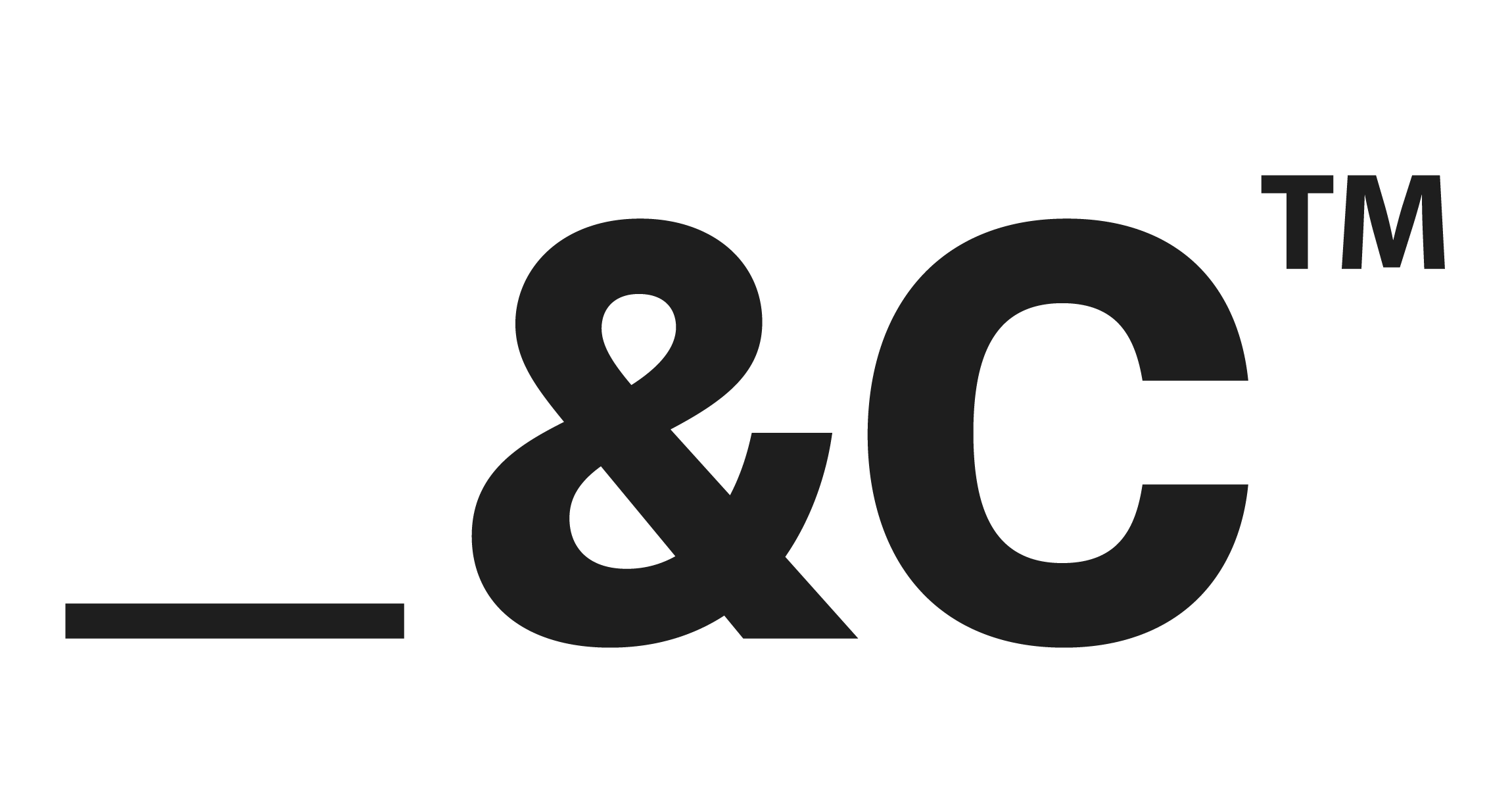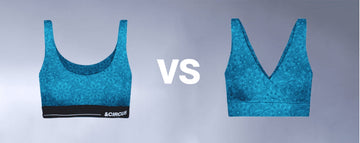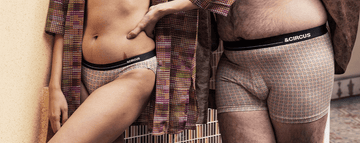Quick Listen:
Picture a morning ritual: you reach for a pair of underwear that feels like a whisper against your skin, crafted with care for both you and the planet. This isn't a distant dream it's the new standard in innerwear. Consumers are no longer settling for mass-produced, environmentally costly garments. Instead, they're embracing sustainable fabrics like micromodal, a biodegradable marvel derived from beech trees. This shift is reshaping the innerwear industry, driven by a demand for eco-conscious choices, ethical production, and unparalleled comfort. From urban lofts to rural homes, the call for sustainability is loud and clear, and brands are racing to answer.
Uncomfortable underwear shouldn't steal your confidence. At Andcircus, we craft ultra-soft, sustainable Lenzing Modal Micro® innerwear for every body, XS to 5XL. From briefs to bras, our custom packs fit you perfectly. Shop risk-free with our 100% satisfaction guarantee and embrace comfort that includes everyone. #LoveEveryBody. Shop Now!
A Fabric for the Future
The innerwear market is undergoing a seismic transformation, propelled by consumers who prioritize values over convenience. The sustainable underwear market, valued at $500 million in 2025, is projected to grow at a 12% compound annual growth rate through 2033. This surge reflects a growing appetite for eco-friendly materials like micromodal, bamboo, and organic cotton, which offer softness and sustainability in equal measure. Micromodal, in particular, stands out for its luxurious texture and eco-credentials, as it breaks down naturally unlike synthetic alternatives.
This isn't just about fabric choice it's about accountability. Shoppers now scrutinize supply chains, seeking certifications like OEKO-TEX® and TENCEL™ that ensure non-toxic, sustainable production. The broader lingerie market, valued at $44.92 billion in 2024 and expected to reach $87.35 billion by 2032 with an 8.67% growth rate, mirrors this trend. Factors like the growing women's workforce, evolving fashion trends, and social media's influence are fueling demand, particularly in Asia Pacific, which held a 32.35% market share in 2024.
Consumers Leading the Charge
Step into a modern retail space or browse an online store, and the evidence is unmistakable: sustainability is no longer a niche. Gender-neutral designs and minimalist aesthetics are replacing outdated, hyper-gendered styles. Micromodal and bamboo underwear, once exclusive to eco-conscious boutiques, now grace mainstream shelves. The maternity segment is thriving, with brands prioritizing soft, non-toxic materials for pregnant and postpartum bodies. These shifts reflect a broader cultural pivot, where consumers demand products that align with their ethical and environmental priorities.
Social media has amplified this movement. Platforms like Instagram and TikTok serve as digital billboards for sustainable brands, showcasing everything from micromodal bras to inclusive boxer briefs. The women's underwear market has evolved from utilitarian basics to a diverse array of products, including maternity and sports underwear, catering to varied tastes and needs across socioeconomic groups. This diversity reflects a market that's as functional as it is fashionable, meeting consumers where they are whether they're seeking comfort, style, or sustainability.
Yet, the push for sustainability goes beyond aesthetics. A 2019 UK Parliament report on sustainable fashion found that voluntary efforts by large companies to reduce environmental impact have largely failed. The report advocates for systemic changes, such as eco-tariffs and standardized certifications, to combat greenwashing and ensure accountability. Consumers are gravitating toward brands that embrace these reforms, from carbon-offset initiatives to digital garment passports that trace a product's journey from raw material to retail.
Brands Innovating with Purpose
Some companies are leading the way. One micromodal brand has launched a maternity line with seamless, breathable designs that prioritize comfort and safety for new mothers. Another has captured urban markets with a gender-neutral collection of eco-dyed micromodal underwear, marketed as inclusive and sustainable. These brands aren't just selling products they're building trust through transparency. Retailers are also innovating, offering carbon-neutral shipping or subscription models that deliver curated eco-friendly underwear to customer's doors.
These efforts resonate with a growing demographic willing to pay more for values-aligned products. The sustainable underwear market's robust growth is driven by demand for organic and ethically produced garments, with a strong emphasis on fair labor practices within the supply chain. By aligning with these priorities, brands are not only meeting market demand but also fostering loyalty among environmentally conscious shoppers.
Navigating a Complex Landscape
The road to a sustainable innerwear industry isn't without obstacles. Micromodal, while eco-friendly, costs more than conventional cotton or synthetics, posing a challenge for price-sensitive consumers. Education is another hurdle many shoppers mistakenly equate “natural” with “sustainable,” unaware that some natural fibers carry heavy environmental costs. Achieving full supply chain transparency remains elusive, with tracing materials from forest to fiber a complex task for even the most committed brands.
Greenwashing is a persistent threat. Misleading claims about sustainability can erode consumer trust, as highlighted in the 2019 UK Parliament report on sustainable fashion. The report calls for stricter regulations to ensure claims are verifiable, a sentiment echoed by consumers who demand authenticity. Brands must navigate these challenges carefully, balancing cost, education, and transparency to maintain credibility in a competitive market.
Seizing Opportunities in a Growing Market
Despite these challenges, the opportunities are immense. Eco-friendly innerwear is no longer a luxury it's a lifestyle staple. Brands that invest in lifecycle assessments or detailed supply chain reports are building lasting customer loyalty. Retail innovations, like personalized maternity bundles or subscription packs, are boosting retention and brand equity. Success in micromodal innerwear is also opening doors to related categories, such as loungewear and nursing bras, as brands capitalize on consumer trust.
The numbers underscore this potential. The lingerie market's growth, driven by Asia Pacific's 32.35% share, reflects a global appetite for innovative, values-driven products. Meanwhile, the sustainable underwear market's 12% CAGR signals a long-term shift toward eco-conscious consumption. Brands that differentiate through transparency and inclusivity catering to maternity, plus-size, and gender-diverse consumers are poised to lead.
A Future Stitched with Intention
What lies ahead for the innerwear industry? Analysts predict a continued rise in demand for biodegradable fabrics like micromodal, alongside tech-driven innovations like blockchain for supply chain tracking and AI for custom sizing. A textile industry consultant has noted that transparency is now a critical expectation for brands. The next five years will likely see a surge in circular textiles and inclusive designs, with brands prioritizing comfort and ethics across all consumer segments.
For consumers, the message is empowering: every purchase shapes the future. By choosing micromodal over synthetics or supporting brands with fair labor practices, they're driving an industry transformation. The innerwear market, once overlooked, is now a proving ground for sustainability. As the soft, ethical allure of micromodal demonstrates, fashion can be both a personal comfort and a global statement one stitch at a time.
Frequently Asked Questions
What challenges do sustainable underwear brands face in the current market?
Sustainable underwear brands face several key challenges including higher production costs for eco-friendly materials like micromodal compared to conventional fabrics, consumer education gaps where shoppers may confuse "natural" with "sustainable," and the persistent threat of greenwashing. Achieving full supply chain transparency remains complex, as tracing materials from source to final product requires significant investment and coordination across multiple suppliers.
What is micromodal fabric and why is it considered sustainable for underwear?
Micromodal is a biodegradable fabric derived from beech trees that offers both luxurious softness and eco-friendly credentials. Unlike synthetic alternatives, micromodal breaks down naturally in the environment while providing exceptional comfort and breathability. This sustainable fabric has become a popular choice in the growing eco-conscious innerwear market, which is projected to reach significant growth through 2033.
How much is the sustainable underwear market worth and what's driving its growth?
The sustainable underwear market was valued at $500 million in 2025 and is projected to grow at a 12% compound annual growth rate through 2033. This growth is driven by consumers prioritizing eco-friendly materials like micromodal, bamboo, and organic cotton, along with increased demand for ethical production practices and supply chain transparency. Social media influence and the growing women's workforce are also contributing factors to this market expansion.
Disclaimer: The above helpful resources content contains personal opinions and experiences. The information provided is for general knowledge and does not constitute professional advice.
You may also be interested in: The Shift Toward Biodegradable Materials in Innerwear Manufacturing
Uncomfortable underwear shouldn't steal your confidence. At Andcircus, we craft ultra-soft, sustainable Lenzing Micro Modal innerwear for every body, XS to 5XL. From briefs to bras, our custom packs fit you perfectly. Shop risk-free with our 100% satisfaction guarantee and embrace comfort that includes everyone. #LoveEveryBody. Shop Now!







































